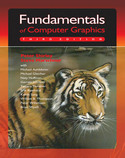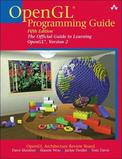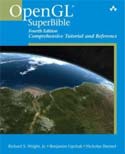
A.K. Peters. The 3rd edition recently came out, but the 2nd edition is also fine to use for the course.
 |
Fundamentals of Computer Graphics: by Peter Shirley et al.
A.K. Peters. The 3rd edition recently came out, but the 2nd edition is also fine to use for the course. |
 |
OpenGL Programming Guide
versions 3.0 and 3.1 by the OpenGL Architecture Review Board
(a.k.a. the "Red Book") is indispensible if you plan to explore OpenGL more fully.
|
 |
OpenGL SuperBible: Comprehensive Tutorial and Reference (5th Edition) is a reference book documenting the OpenGL API |
We are using GLUT version 3.7. The HTML version of the GLUT manual is available online.